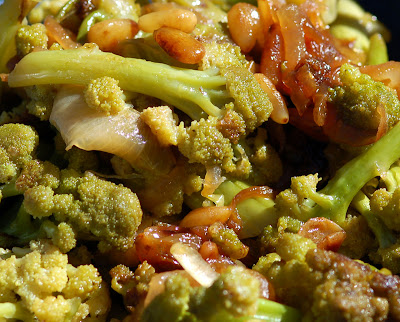Not little baby pea shoots, like the ones that come in a nice safe-looking plastic container from the store. No, these were big, emphatic pea shoots. Pea shoots that meant business. Young and tender, yes, but still. There was no mistaking them for sprouts. No pretending they were not, basically, large pieces of a vine.
The box insert seemed to imply that they were edible. At least, I assume that a recipe for chicken and cilantro with pea shoots suggests you should put the pea shoots in with the chicken, and eat them both.
The internets said sugar snap pea shoots are edible, and other pea shoots are poisonous.
We said: "Surely our beloved CSA box wouldn't poison us."
And then we said: "Surely our beloved CSA box wouldn't poison us intentionally."
We Googled "sugar snap pea shoots" and compared and contrasted the pictures with our bowl full of loosely identified vegetable matter. We tilted our heads and squinted. We reassured each other about the similarity of the leaf shape in the photograph and the leaf shape in our hands. We reiterated the point about our CSA box not poisoning us. We made courageous declarations about boldly going where smarter people might not be particularly inclined to go. We steeled our steadfast stomachs.
We cooked the pea shoots. We ate them.
So far, you will be happy to know, we are decidedly alive, and these were decidedly delectable.
Ingredients
A big bowl full of young sugar snap pea shoots, cut or pinched into 3-inch pieces
(if you pinch them apart with your fingertips, you can tell if they're tender -- if you come across a tough piece, toss it out)
1 tbsp butter
1 tbsp olive oil
1 clove garlic, smashed
1 tsp black mustard seeds
Kosher salt
Freshly ground black pepper
Heat butter and olive oil in a nonstick pan over medium heat. When hot, add the garlic and mustard seeds and saute for about 2 minutes. Add the pea shoots, sprinkle with salt, and saute, tossing from time to time, for 2 minutes or until most of the leaves have just wilted. Turn off the heat, toss once more, and season with salt and pepper to taste. Serve hot.
Serves 2-4, and pairs well with Sri Lankan dal curry or fish.







































